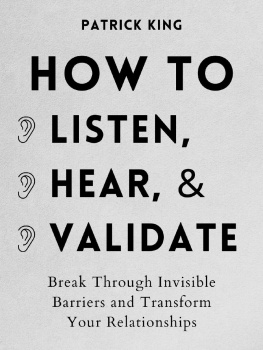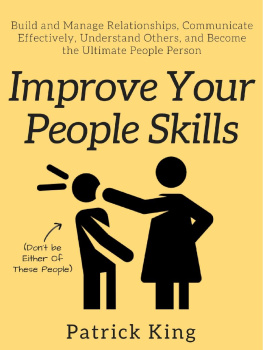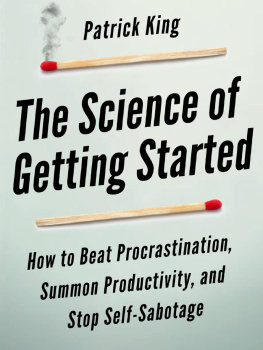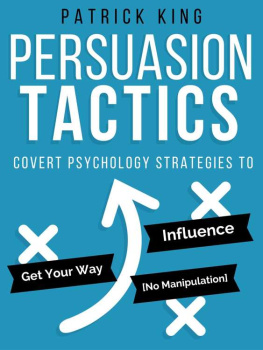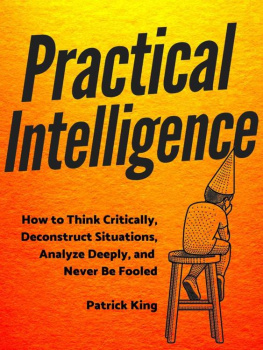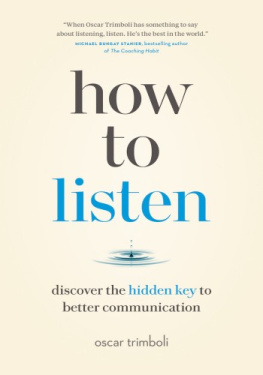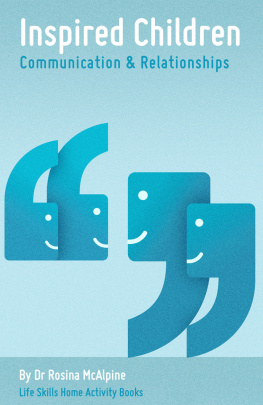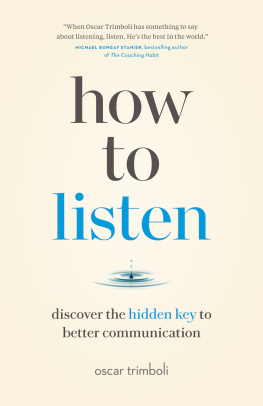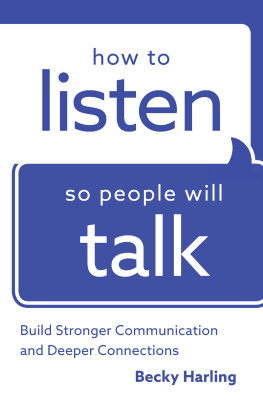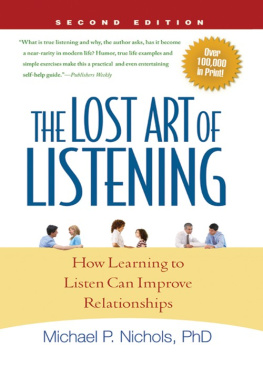Patrick King - How to Listen, Hear, and Validate: Break Through Invisible Barriers and Transform Your Relationships
Here you can read online Patrick King - How to Listen, Hear, and Validate: Break Through Invisible Barriers and Transform Your Relationships full text of the book (entire story) in english for free. Download pdf and epub, get meaning, cover and reviews about this ebook. year: 2021, publisher: PublishDrive, genre: Religion. Description of the work, (preface) as well as reviews are available. Best literature library LitArk.com created for fans of good reading and offers a wide selection of genres:
Romance novel
Science fiction
Adventure
Detective
Science
History
Home and family
Prose
Art
Politics
Computer
Non-fiction
Religion
Business
Children
Humor
Choose a favorite category and find really read worthwhile books. Enjoy immersion in the world of imagination, feel the emotions of the characters or learn something new for yourself, make an fascinating discovery.
- Book:How to Listen, Hear, and Validate: Break Through Invisible Barriers and Transform Your Relationships
- Author:
- Publisher:PublishDrive
- Genre:
- Year:2021
- Rating:4 / 5
- Favourites:Add to favourites
- Your mark:
How to Listen, Hear, and Validate: Break Through Invisible Barriers and Transform Your Relationships: summary, description and annotation
We offer to read an annotation, description, summary or preface (depends on what the author of the book "How to Listen, Hear, and Validate: Break Through Invisible Barriers and Transform Your Relationships" wrote himself). If you haven't found the necessary information about the book — write in the comments, we will try to find it.
Cultivate deep connections wherever you go. Prevent 100% of conflict, misunderstanding, and loneliness.
Healthy relationships involve our feelings being heard, understood, and validated. Unfortunately, this is the exception rather than the rule. Are you doing it wrong, and alienating people versus comforting them? Find out how to walk this fine line.
Uncover the biggest obstacle to the intimate, healthy relationships that we desire and deserve.
How to Listen, Hear, and Validate is all about our top communication struggle - our tendency to react instead of respond, and forget that our goal is to build bridges rather than walls. Youll learn what youve been doing wrong, and why your efforts at getting closer to people - in deep or light manners - have failed. Youll learn actionable techniques and frameworks to have the most productive conversations of your life - ones that will walk away with people praising how empathetic you are.
Most importantly, you will gain profound insights on how to reprogram yourself into a natural communicator.
No more unresolved issues, struggles to get close, or failures from ineffective communication.
Patrick King is an internationally bestselling author and social skills coach. His writing draws of a variety of sources, from scientific research, academic experience, coaching, and real life experience. His struggles in his early relationships has inspired him to unravel practical ways to cultivate meaningful, reciprocative interactions.
Establish vulnerable, fulfilling and satisfying relationships.
- How to structure a style for effective validation and empathy
- Scripts to validate others, to know exactly what to say
- Simple tactics to make others feel loved and seen
- How to use empathetic communication and active listening techniques
Did you know? Most communication problems come from a lack of validation.
Are we truly paying attention to the messages others are conveying, or are we just waiting for our turn to speak? Are we listening to reply, or listening to hear? After applying the proven techniques from this book, youll be able to increase love, respect and satisfaction to your relationship. Youll become the person everyone wants in their life.
Connect deeper and better. Raise the standard for your relationships.
Patrick King: author's other books
Who wrote How to Listen, Hear, and Validate: Break Through Invisible Barriers and Transform Your Relationships? Find out the surname, the name of the author of the book and a list of all author's works by series.

